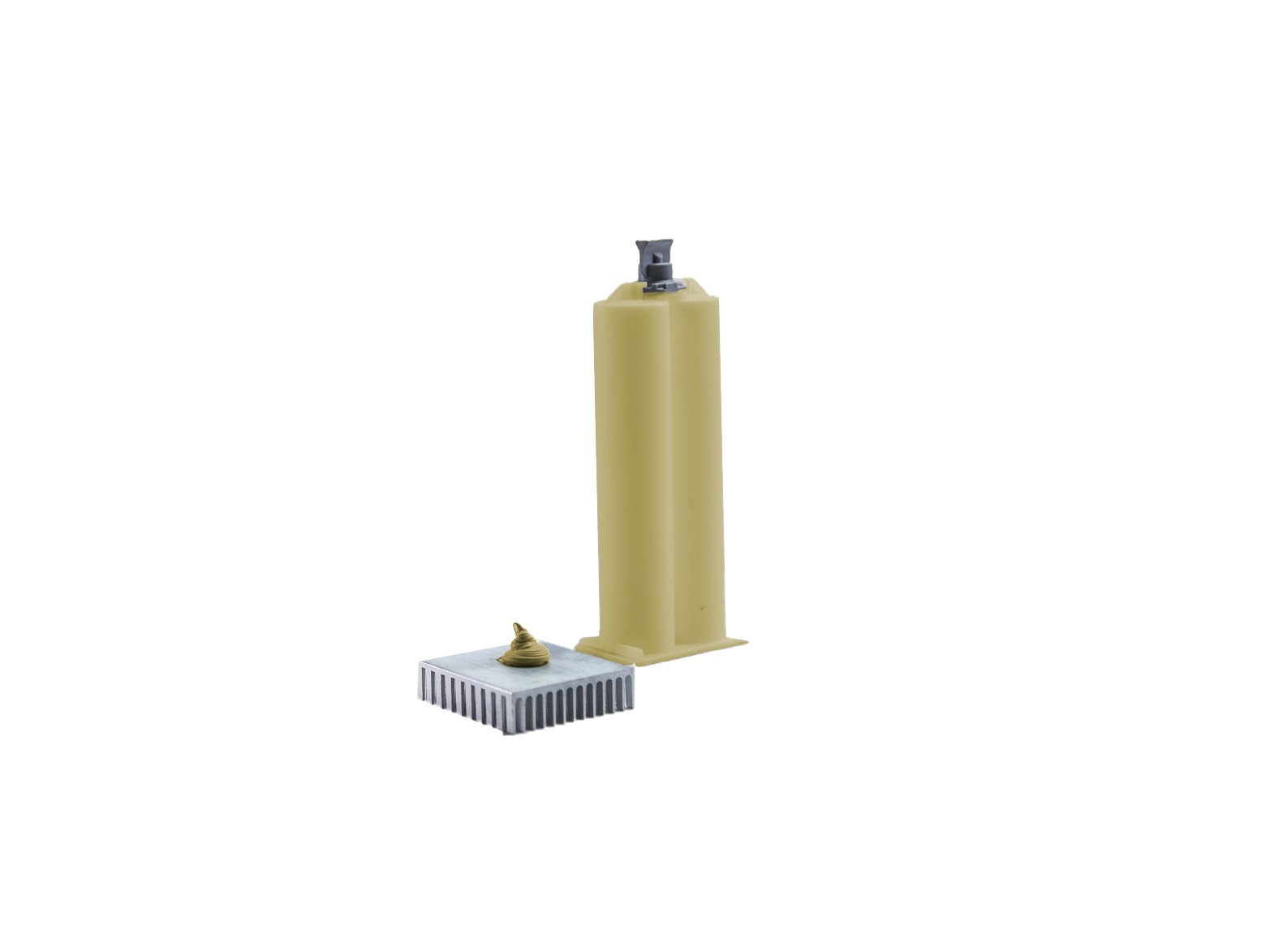HLT 1800 | Two part Hybrid Thermal Gel
- Yellow + White
- 1.8 Thermal Conductivity
- Cost effective
Product Description
Honeywell HLT1800 is two-part, dispensable thermal gap filler with low viscosity and good thixotropy properties. HLT1800 is formulated to balance thermal performance, phase separation and dispensing property. With its high compressibility, it is designed to minimize thermal resistance at interfaces and maintain excellent performance through reliability testing. It is typically used to cool capacitors and other packaged chips within IGBT modules that are conveniently preprinted with PTM7950.
Honeywell HLT1800 exhibits excellent surface wetting and good dispensing and thixotropy properties for automated assembly processes. It offers low density, high compressibility for low-stress applications and proven long term reliability. The minimum bond line thickness it can reach is 0.2mm
The product can be cured at either 18 hours at Room temperature or 30 minutes at 120°C. Of course those are just indications and you can experiment with curing for your application needs.
Technical Specifications
| General Properties | |||||
| Color Color The color | Yellow White | ||||
| Specific Gravity Specific Gravity Specific gravity (SG) is the ratio of the density of a substance to the density of a reference substance; equivalently, it is the ratio of the mass of a substance to the mass of a reference substance for the same given volume. For liquids, the reference substance is almost always water (1), while for gases, it is air (1.18) at room temperature. Specific gravity is unitless. | 2 | ||||
| |||||
| Physical Properties | |||||
| Viscosity Viscosity Viscosity is a measurement of a fluid’s resistance to flow. Viscosity is commonly measured in centiPoise (cP). One cP is defined as the viscosity of water and all other viscosities are derived from this base. MPa is another common unit with a 1:1 conversion to cP. A product like honey would have a much higher viscosity -around 10,000 cPs- compared to water. As a result, honey would flow much slower out of a tipped glass than water would. The viscosity of a material can be decreased with an increase in temperature in order to better suit an application | 300,000 mPa.s | ||||
| Mechanical Properties | |||||
| |||||
| Thermal Properties | |||||
| Thermal Conductivity Thermal Conductivity Thermal conductivity describes the ability of a material to conduct heat. It is required by power packages in order to dissipate heat and maintain stable electrical performance. Thermal conductivity units are [W/(m K)] in the SI system and [Btu/(hr ft °F)] in the Imperial system. | 1.8 W/m.K | ||||
| Thermal Impedance | 0.8 °C·cm²/W | ||||



